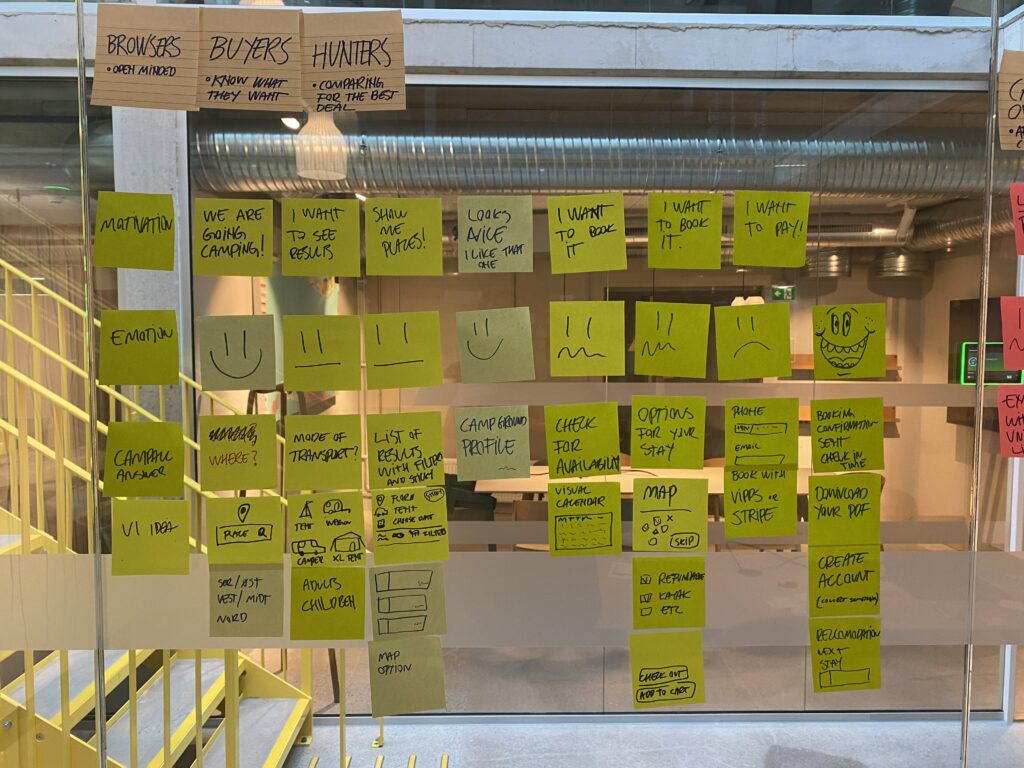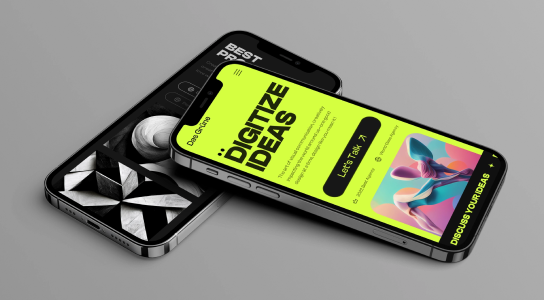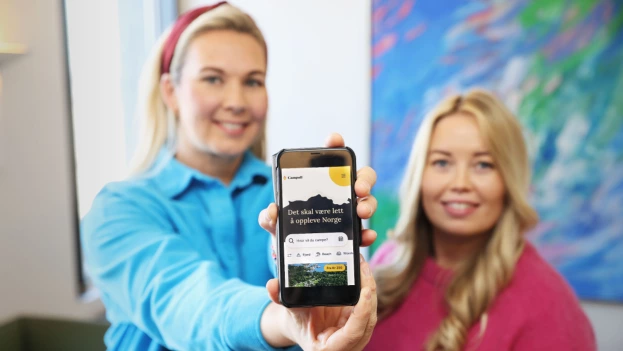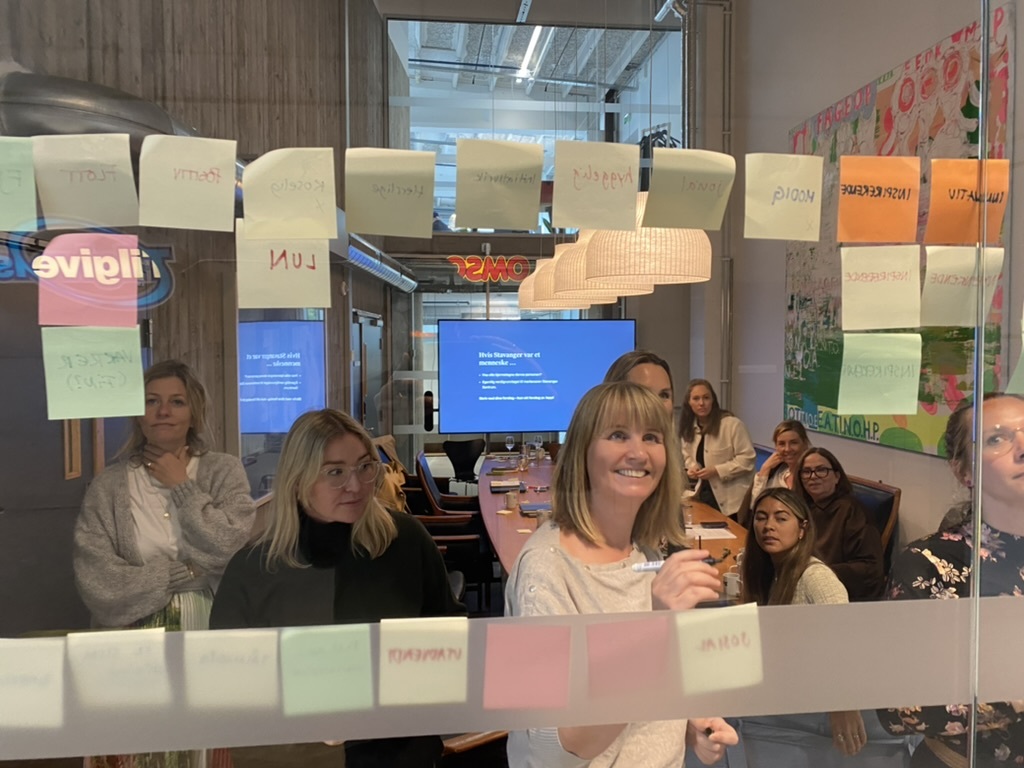There’s an adage that says you shouldn’t find an audience for your idea, but an idea for your audience.
But even if you’ve got that Big Idea – one that solves a pressing problem or addresses a need that’s begging to be met – you still need to work out what the best version of that idea is.
One of the most effective ways of doing this is to workshop your Big Idea as quickly as possible. Doing this can put you on the fast-track to delighting customers and growing your business.
But workshops are a double-edged sword. They can be filled with traps for the unwary and lead you quickly down rabbit holes, towards dead-ends, and into all sorts of other unfortunate travel metaphors.
So, we asked our very own King of Workshops, Andreas Melvær, to give you his top tips for a successful workshop.
Soon your Big Idea will be on the highway to success. (OK, that’s enough of the travel metaphors. The floor is yours, Andreas…)

1. Get the right people involved
All too often those attending a workshop already know what the answer should be. The voices you really need to hear – who have the diverse opinions you need – are excluded or forgotten.
So, before you start, try to think of all the internal and external stakeholders who will be involved in the creation and consumption of your idea, and invite them along. That could mean colleagues, investors, the target audience, and others.
The key is to ensure that, as best you can, you include people who represent the cultures, interests, and needs of those you want to attract to your project. Build something for them. Not for you.
2. Get lots of post-it notes
This might sound clichéd but post-its perform an important democratic function in a workshop.
By getting people to write ideas down rather than shout them out, you avoid having the guy with the loudest voice or with the most senior job doing all the talking.
When using them, it’s important to ‘time box’ each question, issue, or challenge you are addressing (e.g. your goals, target audiences, the impression you want to make, some of your functionality you might offer, etc.)
This means limiting the time people have to come up with ideas/solutions, while making sure they only offer one idea per post-it.
When the limit expires, one person should collect all the ideas and group similar ones together.

Then invite people to discuss and vote on the best ideas, encouraging participants to look carefully at all of them. Don’t ignore the lonely post-its with ideas that only one or two people have come up with; often those outliers can be gamechangers.
3. Use the ’Yes and’ principle
This is all about parking the cynicism we naturally employ in day-to-day life.
Scepticism can be toxic in a workshop. Instead, we want to embrace solutions, no matter how crazy or weird they might seem.
The ‘yes, and…’ principle dictates that when Person A makes a statement, Person B responds by accepting Person A’s statement (the “yes” part) and then builds on it further (the “and” part). This encourages people to be positive and constructive, rather than look for problems.
Your aim is to create an environment where participants can propose ideas or solutions that range from the sublime to the ridiculous. Something you first think is impossible might the basis of a great idea.
Once you’ve done this you can create time for critical thinking, but critical should mean ‘analytical’, not destructive.

4. Define your MVP
Once you’ve defined goals, target audiences, the impression you want to make, some functionality, and so on, then it’s time to define your MVP… your Minimum Viable Product.
This represents the beating heart of your product or service – and is the most important thing to nail if you want to succeed.
The fastest way to get to your MVP is to define the most common (or core) user journey for your product or service. To find that you’ll need to ask questions like:
- what’s the user’s motivation (what are they trying to achieve)?
- what does he or she need to do to achieve his goal?
- what is he or she feeling at each stage? (If you know what motivates and frustrates them you’ll find it easier to keep them engaged.)
You may come up with several user journeys, but you need to stay focused on the one that will be the most commonly used by customers.
Take the example of a camping app that lets you book a plot in your favoured place. Your customer’s most common journey will be:
- search for camping place
- select camping place
- book it
- pay for it
- get a receipt
They might want other functions, for example to change their password, order an extra kayak, or buy anti-moose spray. But these are not core journey elements. Put them aside for now and concentrate on that core journey and make sure you have removed as much friction from that as possible.
This should then form the basis of brainstorming a site map – a list of pages/stages you need to create so the customer can complete that journey.
This will, in turn, become the basis of your prototype.
5. Create non-traditional personas
A quick word on creating audience personas, which are used to help you understand your customer and how you can reach them.
Traditionally, these were created using categories like age, gender, and so on. Be careful with these as traditional roles and behaviours have changed and lines have blurred.
It is often more effective to create personas that are based on common interests, rather than more restrictive categories.

6. Tell an epic story
This is the opposite of the MVP (Minimum Viable Product), which focuses on doing core functionality well.
In the case of MVP, you are trying to minimalise the concept. Now it’s time to let your imagination soar and start thinking about all the possible applications of your product or service.
This allows you to start thinking about how you are going to talk about the vision you have for your idea, as well as what its benefits and features will offer.
A good way to get the creative juices flowing is to ask the room:
If what we’re doing / the service we are going to provide becomes the new norm, what is the most extreme consequence of that scenario?
This question is a great way to start unleashing people’s creativity. Find how far you can stretch the concept (and then dial back if you want to).
7. Start thinking about thoughts
It’ll be much easier to sell your Big Idea when it hits the market if you are already recognised in that area. It’s never too early to start establishing yourself as a trusted source of information in your area of choice.
If customers know who you are and – even better – see you as trustworthy, they are much more likely to buy from you. So don’t wait; start establishing intellectual capital ASAP in your chosen area.
Going back to our camping example, I would ask those in the workshop what areaas of expertise they want to be recognised for in the camping space.
Based on the answers, easy wins might be creating articles and videos on how to cook in the wild, your favourite camp spots, how to pack, or how to fight off a bear. This content can then begin to establish you as an expert who can be trusted.
(Top tip: you can also get a head-start by searching Google Trends to see what it is people who are into – e.g. camping – are searching for and using those search terms. Taking cues from Google means you are more likely talking about the things your audience is searching for.)
A workshop is a great place to get that ball rolling on this. To maintain focus you should create content cards, with one idea on each. A single content card will detail elements like:
- the topic I think we should be talking about / demonstrating our expertise on
- where we’ll publish content about this and how often
- what collateral will we need
- where should we NOT publish and what should we NOT say?
If you pick some core subject areas and some distribution channels to share them, you’ll start to create a manageable, consistent content system from the earliest days and begin to establish yourself as someone that others should come to for solutions.


